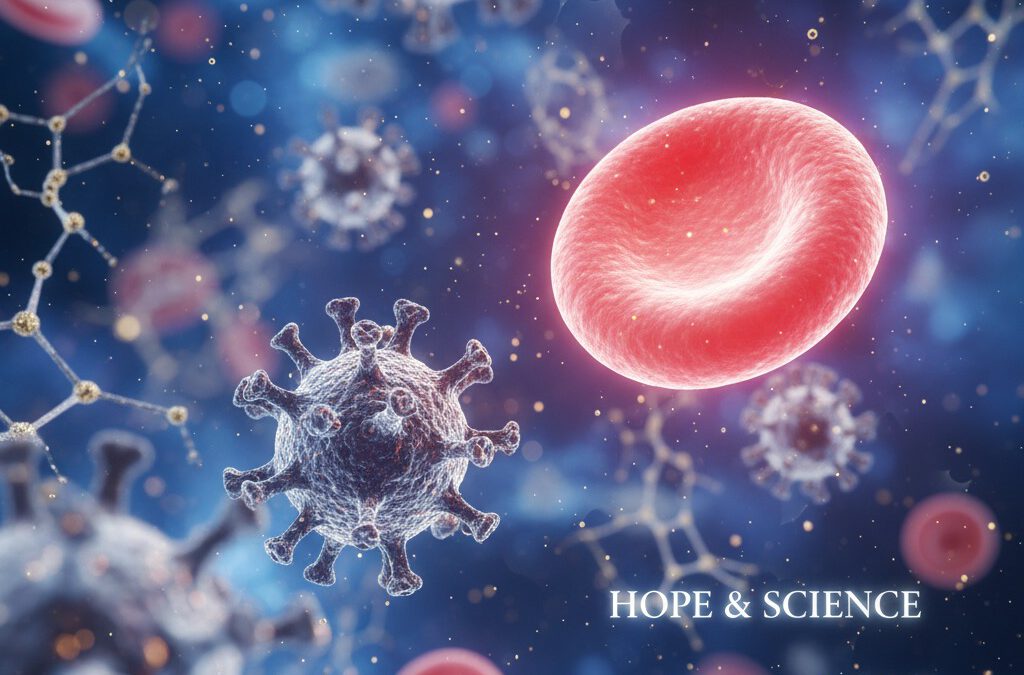ปรึกษา หมอกัณฒิภัสส์
💚โรคติดเชื้อไวรัสภูมิคุ้มกันบกพร่องในมนุษย์ (Human Immunodeficiency Virus, HIV) เป็นเชื้อไวรัสที่ทำลายระบบภูมิคุ้มกันของร่างกาย โดยเฉพาะเซลล์ CD4 T-lymphocytes ทำให้ร่างกายอ่อนแอและเสี่ยงต่อการติดเชื้อฉวยโอกาส (Opportunistic Infections) และมะเร็งบางชนิด หากปล่อยทิ้งไว้โดยไม่รักษา จะเข้าสู่ระยะที่รุนแรงที่สุดคือ โรคเอดส์ (Acquired Immunodeficiency Syndrome, AIDS)
การติดต่อและการป้องกัน
😀HIV ติดต่อได้ 3 ช่องทางหลัก:
1. การมีเพศสัมพันธ์: ทั้งทางช่องคลอด ทวารหนัก และช่องปาก โดยไม่ได้ป้องกันด้วยถุงยางอนามัย
2. ทางเลือด: การใช้เข็มฉีดยาร่วมกัน (เช่น ในผู้ใช้สารเสพติด) หรือการรับเลือดในอดีต (ปัจจุบันมีการคัดกรองอย่างเข้มงวด)
3. จากแม่สู่ลูก: ระหว่างการตั้งครรภ์ การคลอด หรือการให้นมบุตร
😀ข้อเท็จจริงสำคัญ:
• ไม่ติดต่อ ทางการสัมผัสทั่วไป เช่น การกอด การจูบ (แบบไม่มีแผลในปาก) การใช้ห้องน้ำร่วมกัน การใช้ภาชนะร่วมกัน หรือยุงกัด
• 👍การป้องกัน:
• ใช้ถุงยางอนามัย ทุกครั้งที่มีเพศสัมพันธ์
• ยา PrEP (Pre-Exposure Prophylaxis): การกินยาต้านไวรัสก่อนการสัมผัสเชื้อ สำหรับผู้ที่มีความเสี่ยงสูง
• ยา PEP (Post-Exposure Prophylaxis): การกินยาต้านไวรัสฉุกเฉินภายใน 72 ชั่วโมงหลังสัมผัสความเสี่ยง
✅อาการและการรักษา
การติดเชื้อ HIV แบ่งได้ 3 ระยะ:
1. ระยะเฉียบพลัน (Acute HIV Infection):
• เกิดขึ้น 2-4 สัปดาห์หลังรับเชื้อ
• มีอาการคล้ายไข้หวัดใหญ่ เช่น มีไข้ ผื่น ปวดเมื่อย ต่อมน้ำเหลืองโต อาการเหล่านี้มักหายไปได้เอง
2. ระยะเรื้อรัง (Chronic HIV Infection / Clinical Latency):
• ส่วนใหญ่มักไม่มีอาการใด ๆ
• หากไม่รักษา ระยะนี้อาจกินเวลานานเป็นสิบปี โดยที่เชื้อยังคงทำลายระบบภูมิคุ้มกันอย่างช้า ๆ
3. ระยะเอดส์ (AIDS):
• เป็นระยะที่ภูมิคุ้มกันบกพร่องรุนแรง (CD4 count < 200 cells/\text{mm}^3)
• มีการติดเชื้อฉวยโอกาสหรือมะเร็งบางชนิดที่บ่งชี้ว่าเป็นเอดส์ เช่น วัณโรคปอดอักเสบจากเชื้อ Pneumocystis jirovecii หรือมะเร็ง Kaposi’s sarcoma
👌ความก้าวหน้าของการรักษา:
ปัจจุบัน ไม่มีวิธีรักษาให้หายขาดได้ แต่สามารถ ควบคุมเชื้อได้ ด้วย ยาต้านไวรัส (Antiretroviral Therapy, ART) หากเริ่มยาเร็วและกินยาต่อเนื่องสม่ำเสมอ ผู้ติดเชื้อ HIV สามารถ:
• มีปริมาณไวรัสในเลือดต่ำมากจน ตรวจไม่พบ (Undetectable Viral Load)
• ใช้ชีวิตได้ยืนยาวและมีคุณภาพชีวิตที่ดีเทียบเท่าคนปกติ
• ไม่แพร่เชื้อ ไปสู่ผู้อื่นทางเพศสัมพันธ์ (หลักการ U=U: Undetectable equals Untransmittable)
หลักการวินิจฉัย (Diagnostic Principles)
การวินิจฉัยอาศัยการตรวจหาแอนติบอดี (Antibody) และ/หรือ แอนติเจน p24 ของเชื้อ HIV โดยมีขั้นตอนมาตรฐานดังนี้:
1. การตรวจคัดกรอง (Screening Test): ใช้ Fourth-generation {Ab/Ag} combination immunoassays (ตรวจทั้งแอนติบอดีต่อ HIV-1/2 และ p24 แอนติเจน)
• สามารถตรวจพบได้เร็วขึ้น (Window Period สั้นลงเหลือประมาณ 2-4 สัปดาห์)
2. การตรวจยืนยัน (Confirmatory Test): หากผลคัดกรองเป็นบวก จะตามด้วยการตรวจยืนยัน เช่น Differentiation Immunoassays
😀แนวทางการรักษา
1. ยาต้านไวรัส (Antiretroviral Therapy, ART):
• เริ่มการรักษาทันที (Treat All): ปัจจุบันแนะนำให้เริ่มยาต้านไวรัสทันทีที่วินิจฉัย ไม่ว่าระดับ {CD4} จะเป็นเท่าใดก็ตาม เพื่อลดภาวะแทรกซ้อนและป้องกันการแพร่เชื้อ
• สูตรยาเริ่มต้น (Initial Regimen): มักใช้ยาสูตรผสมที่ประกอบด้วยยา 3 ตัว (3-drug combination) จาก 2 กลุ่มยาที่แตกต่างกัน (e.g., 2 NRTIs + 1 NNRTIs หรือ 2 NRTIs + 1 Integrase Inhibitor)
• TDF/TAF (Tenofovir disoproxil/alafenamide) + FTC (Emtricitabine) เป็นแกนหลักของ ในหลายสูตร
• การติดตามการรักษา (Monitoring):
• CD4 count: ใช้ประเมินความเสียหายของระบบภูมิคุ้มกันและกำหนดแนวทางในการป้องกัน/รักษาโรคติดเชื้อฉวยโอกาส
• Viral Load (ปริมาณไวรัสในเลือด): ใช้ประเมินผลสำเร็จของการรักษา
2. การป้องกันและการรักษาโรคติดเชื้อฉวยโอกาส (OI Prophylaxis)
• สำหรับผู้ป่วยที่มี {CD4} ต่ำกว่าเกณฑ์ (< 200 cells/\text{mm}^3) จำเป็นต้องได้รับยาเพื่อป้องกันการติดเชื้อฉวยโอกาสที่พบบ่อย เช่น Pneumocystis jirovecii pneumonia (PCP)
3. การป้องกันก่อนและหลังสัมผัสเชื้อ (Pre- and Post-Exposure Prophylaxis):
• PrEP (Pre-Exposure Prophylaxis)
• PEP (Post-Exposure Prophylaxis): ใช้ยาต้านไวรัส นาน 1 วัน เริ่มต้นให้เร็วที่สุดหลังสัมผัสความเสี่ยง (ไม่เกิน 72ชั่วโมง)
💕การรักษา HIV ในปัจจุบันถือเป็นความสำเร็จทางวิทยาศาสตร์การแพทย์ที่ยิ่งใหญ่ ทำให้ผู้ติดเชื้อสามารถมีชีวิตที่มีคุณภาพและมีอายุขัยใกล้เคียงคนทั่วไปได้ หากได้รับการดูแลอย่างต่อเนื่องและถูกหลักการแพทย์
โทร 0833309366
เปิดทุกวัน
จันทร์ ถึง พุธ 16.30 – 20.00 น.
พฤหัส ถึง ศุกร์. 8.00 – 20.00 น.
วันเสาร์ 8.00 – 12.00 น.
อาทิตย์ 8.00 – 16.00 น.
Monday – Wednesday 4.30 pm to 8 pm
Thursday – Friday 8 am to 8 pm
Saturday 8 am to noon
Sunday 8 am to 4 pm
แผนที่ google map กดที่ลิ้ง http ได้เลยครับ
https://maps.app.goo.gl/8q59d
+++++++++++++++++++++++++++++++++++
💚Human Immunodeficiency Virus (HIV) is a virus that attacks the body’s immune system, particularly CD4 T-lymphocytes. This weakens the body and increases the risk of opportunistic infections and certain cancers. If left untreated, it can progress to the most severe stage, Acquired Immunodeficiency Syndrome (AIDS).
Transmission and Prevention
😀HIV is transmitted through three main routes:
1. Sex: Vaginal, anal, and oral, without condoms.
2. Blood: Sharing needles (e.g., for drug users) or past blood transfusions (currently under strict screening).
3. Mother-to-child: During pregnancy, childbirth, or breastfeeding.
😀Key Facts:
• Not transmitted through casual contact, such as hugging, kissing (without mouth sores), sharing bathrooms, sharing utensils, or mosquito bites.
• 👍Prevention:
• Use a condom. Every time you have sex
• PrEP (Pre-Exposure Prophylaxis): Taking antiretroviral medication before exposure for those at high risk.
• PEP (Post-Exposure Prophylaxis): Taking emergency antiretroviral medication within 72 hours of exposure.
✅ Symptoms and Treatment
HIV infection is divided into three stages:
1. Acute HIV Infection:
• Occurring 2-4 weeks after infection.
• Flu-like symptoms such as fever, rash, aches, and swollen lymph nodes. These symptoms usually resolve on their own.
2. Chronic HIV Infection (Clinical Latency):
• Most people have no symptoms.
• If left untreated, this stage can last for decades. The virus continues to slowly destroy the immune system.
3. AIDS Stage:
• This stage is characterized by severe immunodeficiency (CD4 count < 200 cells/mm3).
• There are opportunistic infections or certain cancers that indicate AIDS, such as tuberculosis, pneumonia caused by Pneumocystis jirovecii, or Kaposi’s sarcoma.
👌Treatment Advances:
Currently, there is no cure. However, the virus can be controlled with antiretroviral therapy (ART). If medication is started early and taken consistently, HIV-infected individuals can:
• Have a very low viral load in their bloodstream (undetectable viral load).
• Live a long life and a quality of life comparable to that of a normal person.
• Not sexually transmitted (U=U principle: Undetectable equals Untransmittable).
Diagnostic Principles
Diagnosis is based on the detection of antibodies and/or p24 antigens of the virus. HIV testing is performed using the following standard procedures:
1. Screening Test: Fourth-generation {Ab/Ag} combination immunoassays (testing for both HIV-1/2 antibodies and p24 antigen)
• Detection is faster (window period shortened to approximately 2-4 weeks)
2. Confirmatory Test: If the screening result is positive, a confirmatory test such as a differentiation immunoassay is followed by a differential immunoassay.
😀Treatment Guidelines
1. Antiretroviral Therapy (ART):
• Immediately initiate treatment (Treat All): Currently, it is recommended to initiate antiretroviral therapy immediately after diagnosis, regardless of CD4 count. To reduce complications and prevent the spread of infection,
• Initial Regimen: A 3-drug combination regimen is often used, consisting of three drugs from two different drug classes (e.g., two NRTIs + one NNRTI or two NRTIs + one Integrase Inhibitor).
• TDF/TAF (Tenofovir disoproxil/alafenamide) + FTC (Emtricitabine) is the core of many regimens.
• Treatment Monitoring (Monitoring):
• CD4 count: Used to assess immune system damage and determine strategies for prevention/treatment of opportunistic infections.
• Viral load (viral load in blood): Used to assess treatment success.
2. Prevention and Treatment of Opportunistic Infections (OI Prophylaxis)
• Patients with CD4 counts below the threshold (<200 cells/mm3) require medication to prevent common opportunistic infections, such as Pneumocystis jirovecii pneumonia (PCP).
3. Pre- and Post-Exposure Prophylaxis:
• PrEP (Pre-Exposure Prophylaxis)
• PEP (Post-Exposure Prophylaxis): Use antiretroviral medication for one day, starting as soon as possible after potential exposure (within 72 hours).
💕 HIV treatment today is a major medical scientific achievement, enabling people with HIV to live a quality life and a life expectancy comparable to that of the general population, with consistent and appropriate medical care.



